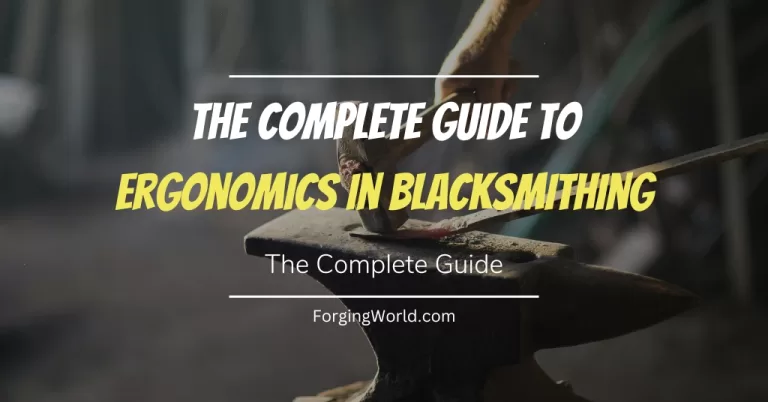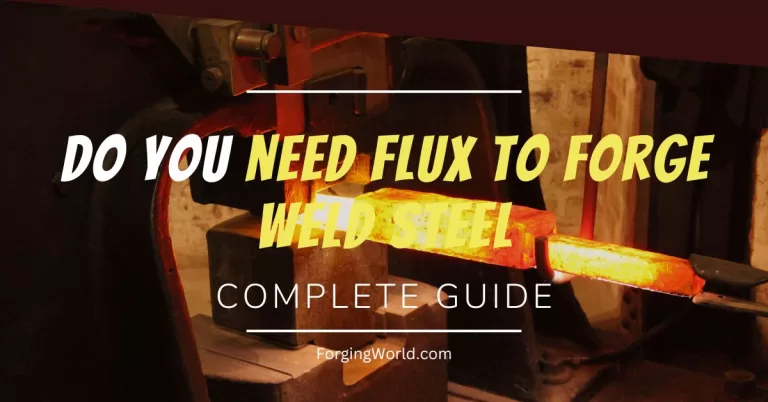Sometimes bituminous or anthracite coal is not an option so you need to start searching for alternative fuel choices for the forging process. The biggest problem with coal is its availability. For some people, good blacksmithing coal just is not possible to get for whatever reason it may be.
From the practical point, only 1 similar solid fuel comes to mind, and that is charcoal. But now the question arises, can it be used for blacksmithing purposes?
If properly maintained, charcoal can achieve temperatures hot enough for forging. As it burns out quickly, it doesn’t require as much air flow as coal does. If you never worked with charcoal before, note that it can spark a lot, so be sure your forge is at the appropriate place.
As with any type of fuel, it is important to know the proper fire management to achieve desired temperatures and also, not overspend the fuel. Further, it is very important to keep yourself safe when working with charcoal as sparks can fly anywhere.
Proper Charcoal Fire Management
If previously used, the forge must be cleaned from all leftovers of fuel and clinkers, which build up during the process. Also, make sure the piping system underneath the forge is cleaned up to allow proper airflow.
Charcoal can be lit in several ways. For example, you can put the paper below and fire it first. You can also put some wood on the paper, depending on how much fire you want. Charcoal can also be lit with some combustible liquids.
After you started a fire, a little airflow is needed. As the fire is growing, charcoal has to be gradually put. Especially with charcoal but with other solid fuels as well, proper air control is a must. You will notice that charcoal does not require as near airflow as coal does. It burns quickly and has to be replenished more often to maintain the proper heat.
Difference Between Charcoal and Coal for Blacksmithing
Simply said, charcoal is burned wood. The slow process of pyrolysis removes water and other volatiles from wood and all that has left is mostly pure carbon. This allows heating to a much higher temperature and less smoke.
When charcoal burns, it burns to ash which can further be used for other useful purposes. It also comes from a renewable source that can be obtained much easier than coal. To achieve the same heat as coal does, a big volume of charcoal is needed. As we said earlier, it doesn’t require much air as it burns more quickly.
You could say that charcoal is a historic fuel. In the past, charcoal was the most common fuel. Many of the world’s most famous blades were made with charcoal as burning fuel. Only recently, coal usage as fuel began.
The great thing about charcoal is the fact that you can make it yourself and therefore, save money. If you decide to buy charcoal, it can be found in most local stores. Charcoal can also be used in many different types of forges.
PROS of charcoal
- Easy available
- Easier to light it up
- Doesn’t require much air blow
- Lights faster
- Can be homemade
CONS of charcoal
- Burns quickly
- Can be more expensive
- Sparks fly everywhere
- Needs more repletion during a fire
Coal, on the other hand, is a combustible sedimentary rock. It is formed by a long-term process of coalification. It is by far the most used solid fuel in blacksmithing. It consists mostly of carbon but other elements like hydrogen, sulfur, nitrogen, and oxygen are present.
If proper fire management is achieved, coal is burned into coke. Coal is usually messier to work with compared to charcoal as it produces more smoke. Be sure to check your state’s law for coals usage. Some states do not allow the usage of coal for anything other than cooking. In the U.S., coal is readily available in the East and therefore cheaper than it is on the West coast.
Because coal burns much more efficiently than charcoal, the volume required for achieving high temperatures is much smaller.
As with both, proper ventilation is required to avoid unnecessary inhalation of harmful particles that smoke produces. Also, be sure to wear protective glasses while working with both. To find out what safety equipment you need for blacksmithing, check Blacksmithing Safety Equipment
What Is the Best Charcoal for Blacksmithing?
When people say charcoal, they usually refer to hardwood lump charcoal. Another type of charcoal is charcoal briquettes.
While lump charcoal is mainly derived from hardwood, briquettes are derived from wood leftover and sawdust.
Hardwood lump charcoal is the best choice for blacksmithing. It burns much cleaner and hotter than briquettes. Lump charcoal is mostly composed of carbon whereas briquettes are added chemicals to hold their shape.
Let’s see the PROS and CONS of lump charcoal and briquettes for blacksmithing use.
Lump Charcoal
PROS of Lump Charcoal
- Natural
- Burns cleaner
- Burns hotter
- Without chemicals
- Easier to make
- Easy to light
CONS of Lump Charcoal
- Burns quickly
- More expensive
Briquettes
PROS of Briquettes
- Easier to find
- Cheaper
- Burns longer
CONS of Briquettes
- Contain additives and other chemicals
- Produces more smoke
- Not achieving high enough temperatures
Easy Way to Make Your Lump Charcoal
Instead of millions of years as how much it takes to form coal, charcoal can be made in just a few hours. This process is known to man for more than 30 000 years.
After you buy charcoal several times, it will soon become clear to you that it is much cheaper to make it than to buy it. Believe it or not, it is not that complicated to make it. Lump charcoal can be expensive as it quickly burns and therefore you need a high amount to achieve the required heat.
We decided to show you an easy way to make your lump charcoal. To do this, you will need:
- 1x small 30 gallons (114 L) barrel
- 1x big 55 gallons (208 L) barrel
- Hardwood
- Hacksaw
INSTRUCTIONS
- Cut off the top of both barrels
- Make a few holes at the bottom of the big barrel for airflow
- Cut off the hardwood into small logs
- Fill the small barrel with logs
- Place the small barrel in the center of a big one
- Put some paper and small pieces of wood around the small barrel
- Light it up
- Maintain fire for 3-4 hours
- Wait until is cooled down COMPLETELY
If you want to see visually how its done, check out an awesome video tutorial.


